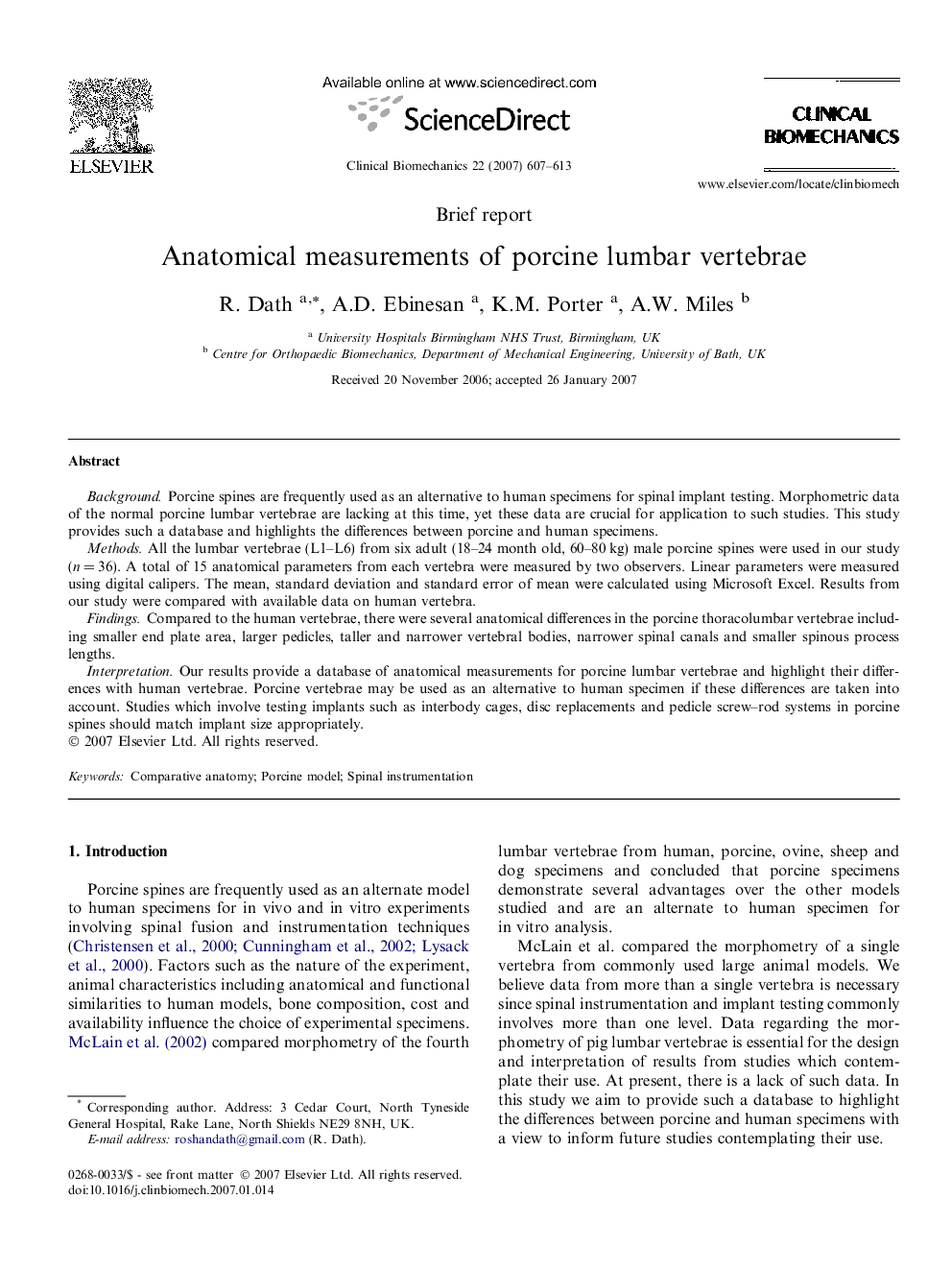| Article ID | Journal | Published Year | Pages | File Type |
|---|---|---|---|---|
| 4051376 | Clinical Biomechanics | 2007 | 7 Pages |
BackgroundPorcine spines are frequently used as an alternative to human specimens for spinal implant testing. Morphometric data of the normal porcine lumbar vertebrae are lacking at this time, yet these data are crucial for application to such studies. This study provides such a database and highlights the differences between porcine and human specimens.MethodsAll the lumbar vertebrae (L1–L6) from six adult (18–24 month old, 60–80 kg) male porcine spines were used in our study (n = 36). A total of 15 anatomical parameters from each vertebra were measured by two observers. Linear parameters were measured using digital calipers. The mean, standard deviation and standard error of mean were calculated using Microsoft Excel. Results from our study were compared with available data on human vertebra.FindingsCompared to the human vertebrae, there were several anatomical differences in the porcine thoracolumbar vertebrae including smaller end plate area, larger pedicles, taller and narrower vertebral bodies, narrower spinal canals and smaller spinous process lengths.InterpretationOur results provide a database of anatomical measurements for porcine lumbar vertebrae and highlight their differences with human vertebrae. Porcine vertebrae may be used as an alternative to human specimen if these differences are taken into account. Studies which involve testing implants such as interbody cages, disc replacements and pedicle screw–rod systems in porcine spines should match implant size appropriately.
